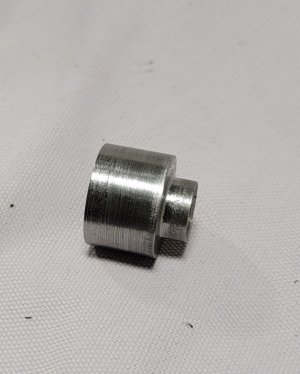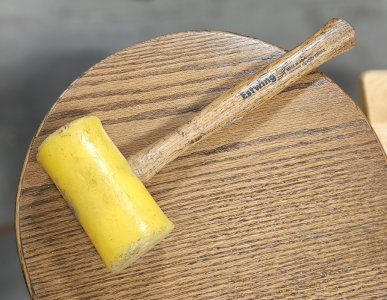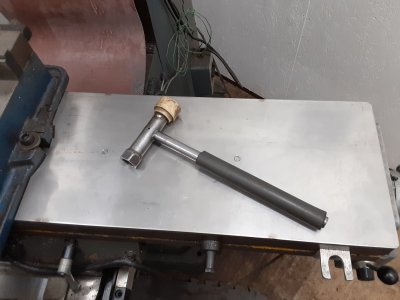-
Scam Alert. Members are reminded to NOT send money to buy anything. Don't buy things remote and have it shipped - go get it yourself, pay in person, and take your equipment with you. Scammers have burned people on this forum. Urgency, secrecy, excuses, selling for friend, newish members, FUD, are RED FLAGS. A video conference call is not adequate assurance. Face to face interactions are required. Please report suspicions to the forum admins. Stay Safe - anyone can get scammed.
-
Several Regions have held meetups already, but others are being planned or are evaluating the interest. The Calgary Area Meetup is set for Saturday July 12th at 10am. The signup thread is here! Arbutus has also explored interest in a Fraser Valley meetup but it seems members either missed his thread or had other plans. Let him know if you are interested in a meetup later in the year by posting here! Slowpoke is trying to pull together an Ottawa area meetup later this summer. No date has been selected yet, so let him know if you are interested here! We are not aware of any other meetups being planned this year. If you are interested in doing something in your area, let everyone know and make it happen! Meetups are a great way to make new machining friends and get hands on help in your area. Don’t be shy, sign up and come, or plan your own meetup!
You are using an out of date browser. It may not display this or other websites correctly.
You should upgrade or use an alternative browser.
You should upgrade or use an alternative browser.
draw bolt rod
- Thread starter garageguy
- Start date
Just wondering what rod would be best to use hot rolled or cold?
Others have suggested a steel to use. I'm not going to do that for you but perhaps I can add a perspective.
The low torque used to tighten a drawbar results in a correspondingly low tensile stress in the drawbar that almost any steel can easily handle. If I were making one, I wouldn't be very fussy about the steel I used.
Because a drawbar gets frequently tightened and loosened, I'd be much more concerned about the quality of threads I cut and the resulting fit and wear conditions imposed by repeated use of collets and arbours on poor quality drawbar threads.
Another condition to be aware of and perhaps design around is drawbar rattle. To have the best chance of being rattle free, a drawbar has to be held in the very center of the quill. If it is not centered, centrifugal forces can play havoc on a long spinning shaft. A fairly effective solution is a centering bushing. But this isn't always as simple as it sounds. Many factory drawbars have rolled threads which means the shaft itself is smaller then the OD of the rolled threads. To address this issue, the bushing ID has to be sized to fit the shaft and then inside threaded to fit the shaft threads. The bushing is then installed by threading it over the drawbar threads and then sliding it to the top of the draw bar.
Here is a picture of my bushing. It is inside threaded to fit the drawbar threads and the smaller OD of the collar fits the ID of the top of the quill. The ID of the bushing fits the OD of the drawbar shaft.

Here is the thread I posted about this bushing. Your drawbar might not need to worry about rolled threads, but it is likely that your quill ID is bigger than your Collet threads.in other words, you will still need the bushing but it won't need to be threaded.
Thread 'Draw bar rattle' https://canadianhobbymetalworkers.com/threads/draw-bar-rattle.4258/
RobinHood
Ultra Member
How about a grade 8 bolt (or similar strength) welded onto any type of steel rod?
As has been mentioned, it is the threads that take the most abrasion and thus lose form fastest. If they wear out, cut off the bolt and weld a new one on. You’d be back in business right away.
As has been mentioned, it is the threads that take the most abrasion and thus lose form fastest. If they wear out, cut off the bolt and weld a new one on. You’d be back in business right away.
Great replies. My main concern is the condition of the threads . As they are wearing/distorting I'm afraid they are coming close to the point when they may ruin the threads in the collets. I was wondering what steel would provide best service for the draw bar. Cutting the old threads off and welding on a new threaded section is an idea but might be hard to get straight. I may try that. Thanks for all the suggestions! Also, these threads are cut, not rolled. @Susquatch ,so your bushing sits at the top of the spindle, under the bolt head?
and weld a new one on
I envy everyone and anyone who can so casually suggest "and weld a new one on"....... LOL!
I have no confidence in my welding skills so welding is almost always a last resort for me.
Also, these threads are cut, not rolled. @Susquatch ,so your bushing sits at the top of the spindle, under the bolt head?
Yes. You are lucky to have cut threads on your drawbar. Some do, and some don't.
And yes, the bushing sits at the top of the quill under the head of the drawbar. The small OD fits into the quill taking up the slop, the big OD takes the compression force between the bottom of the drawbar head and the top of the quill, and the ID fits the OD of the Drawbar Shaft. The purpose is to keep the top of the drawbar centered inside the spindle.
If you do the weld suggested by @RobinHood properly, a Grade 8 bolt would certainly make a great threaded portion of a drawbar. I also keep mine oiled.
Ever since @Mcgyver mentioned welding on a section of grade 8 bolt, my mind has been focussed on the idea of finding an existing grade 8 bolt the right length with a long unthreaded shoulder, make a bushing to both center it and raise it up high enough above the spindle.
It would not be cheap as bolts go, but it would cost way less than a brand new drawbar.
It would not be cheap as bolts go, but it would cost way less than a brand new drawbar.
I replaced my drawbar some time ago, but I did not notice that the replacement was about 5mm longer than the original.
After some time, tooling was not seating properly in the quill and it took some digging to find out why. Basically the sleeve bushing was just a little short and whacking on the top gradually crushed the bushing.
https://canadianhobbymetalworkers.com/threads/bridgeport-diagnose-and-repair-noisy-spindle.9290/post-133103
If the 7/16 threads are cut in softer (malleable) material, there is always the option of case hardening followed by a gentle temper. The drawbar I bought has cut threads and is half-hard.
After some time, tooling was not seating properly in the quill and it took some digging to find out why. Basically the sleeve bushing was just a little short and whacking on the top gradually crushed the bushing.
https://canadianhobbymetalworkers.com/threads/bridgeport-diagnose-and-repair-noisy-spindle.9290/post-133103
A cut thread drawbar on Amazoom is about $32. I'd do it that way rather than trying to weld up a properly aligned drawbar from scrap.It would not be cheap as bolts go, but it would cost way less than a brand new drawbar.
If the 7/16 threads are cut in softer (malleable) material, there is always the option of case hardening followed by a gentle temper. The drawbar I bought has cut threads and is half-hard.
Another option is hydraulic cylinder compression bolts. Might need to pin a head on them or even thread them at the right place, but they would be ideal for the application.
My days of deformed drawbar heads ended with one of these.

It's a plastic deadblow. Less forgiving than rubber and oh so sweet for releasing tapers on everything from lathe chucks, to Morse tapers to collets.
Doesn't deform anything but sets up a vibration that releases with one light whack.
Edit - the deformation on the mallet is from its previous life.
Basically the sleeve bushing was just a little short and whacking on the top gradually crushed the bushing.
My days of deformed drawbar heads ended with one of these.

It's a plastic deadblow. Less forgiving than rubber and oh so sweet for releasing tapers on everything from lathe chucks, to Morse tapers to collets.
Doesn't deform anything but sets up a vibration that releases with one light whack.
Edit - the deformation on the mallet is from its previous life.
Last edited:
Ever since @Mcgyver mentioned welding on a section of grade 8 bolt
wrong guy..... think it was Robinhood.

